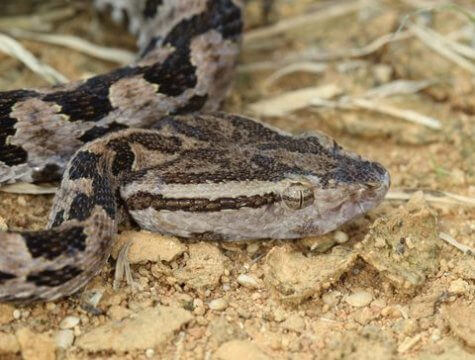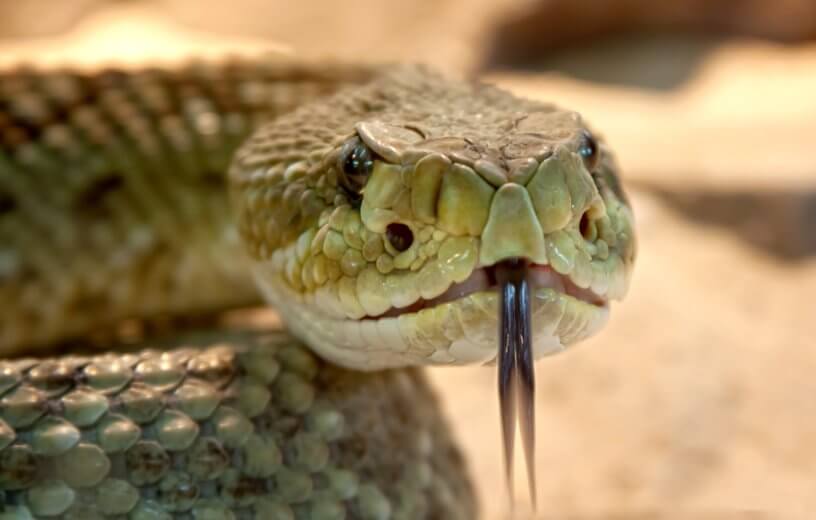OKINAWA, Japan — While humans say venomous things from time to time, no one is walking around with a poisonous bite. If evolution played out a little differently however, a person’s fangs may have been just as deadly as some snakes. Researchers in Japan have discovered that mammals and reptiles have the same genetic blueprints required to create oral venom.
Their study provides the first bit of concrete evidence that there is a molecular link between venom glands in snakes and salivary glands in mammals. Scientists from the Okinawa Institute of Science and Technology Graduate University (OIST) and the Australian National University add while humans and most other mammals don’t produce venom in their mouths, the genetic potential to develop this ability is still present.
“Venoms are a cocktail of proteins that animals have weaponized to immobilize and kill prey, as well as for self-defense,” explains first author Agneesh Barua, a PhD student at OIST, in a university release. “What’s interesting about venom is that it has arisen in so many different animals: jellyfish, spiders, scorpions, snakes, and even some mammals. Although these animals evolved different ways to deliver venom, an oral system – where venom is injected through a bite – is one of the most common and well-studied.”
The origin of oral venom
While animals and insects can produce venom through bites or stings, the new study focuses on oral venom. Specifically, researchers examined snakes, who are infamous for their lethal bites, to uncover venom’s genetic foundation. The team says previous studies have mostly focused on genes that code for the proteins which form the poisonous mixture.
“However, many of the toxins currently found in venom were incorporated after the oral venom system was already established. We needed to look at the genes that were present before venom’s origin, genes which enabled the rise of venom systems,” Barua notes.

OIST/Steven Aird)
In this study, researchers looked for genes which work alongside and interact with the typical venom genes. Study authors used venom glands from the Taiwan habu snake, a pit viper native to Asia, during these experiments.
Scientists discovered nearly 3,000 “cooperating” genes which play key roles in protecting cells from stress after producing lots of proteins. The team believes these genes were also important for regulating protein modification and folding.
When the body creates proteins, long chains of amino acids must fold together into specific patterns. Just like one wrong fold while doing origami, one mistake keeps proteins from taking the correct shape to function correctly. Misfolded proteins can build up in the body and actually damage cells; a key symptom of conditions like Alzheimer’s disease.
“The role of these genes in the unfolded protein response pathway makes a lot of sense as venoms are complex mixtures of proteins. So to ensure you can manufacture all these proteins, you need a robust system in place to make sure the proteins are folded correctly so they can function effectively,” Barua continues.
What do these genes do in mammals?
After examining venom’s blueprints in snakes, study authors turned their attention back to mammals. Looking at species like dogs, chimpanzees, and humans, the team discovered other members of the animal kingdom have their own versions of these genes.
Researchers say the genes in mammalian salivary gland tissues have a similar pattern of activity that snake venom glands display. Their study concludes that both of these glands share an ancient functional background. They add that these similarities have survived even after mammals and reptiles split off during evolution millions of years ago.
“Many scientists have intuitively believed this is true, but this is the first real solid evidence for the theory that venom glands evolved from early salivary glands,” the OIST researcher says. “And while snakes then went crazy, incorporating many different toxins into their venom and increasing the number of genes involved in producing venom, mammals like shrews produce simpler venom that has a high similarity to saliva.”
So will mammals start spitting venom one day?
Scientists say they were startled to uncover how easily the function of salivary glands can switch to produce venom. This may cause researchers working with animals to view their lab subjects in a disturbing new light.
“There were experiments in the 1980s that showed that male mice produce compounds in their saliva that are highly toxic when injected into rats,” Barua explains. “If under certain ecological conditions, mice that produce more toxic proteins in their saliva have better reproductive success, then in a few thousand years, we might encounter venomous mice.”
Researchers say it will take more research to determine if mice really are on an evolutionary path to becoming venomous. For now, their report reveals the line between venomous and non-venomous creatures is a lot blurrier than many may think. Under the right ecological conditions in the future, study authors believe humans could become venomous as well.
“It definitely gives a whole new meaning to a toxic person,” Barua jokes.
The study appears in the Proceedings of the National Academy of Sciences.
